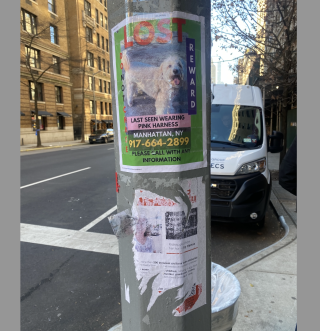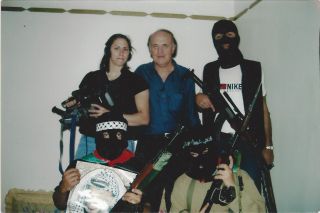Education
Students Need More Perspective on War and Conflict
Personal Perspective: Teaching beyond one-sided stories and perspectives.
Updated December 23, 2023 Reviewed by Ray Parker
Key points
- Understanding multiple perspectives is part of the learning process.
- You can flex your intellectual agility and emotional empathy with complex situations and diverse viewpoints.
- Identify points of agreement, even with conflicting opinions, to anchor a constructive conversation.
After the Israel-Hamas war began, my 11-year-old son Marty wanted me to sum it up.
“Who started it?” he asked as if generations of suffering could be squeezed into a 30-second video on YouTube Shorts.
“It depends on whom you ask,” I said.
I explained Hamas's atrocities on October 7 and we talked about history and conflicts.
“It’s complicated,” I said. “Sometimes, when people feel strongly about one side, it’s hard to acknowledge another.”

Later, I walked to my classroom at New York University, where I teach journalism, and heard groups of students protesting and counter-protesting. I talked to my students about divergent opinions.
“Understand multiple sides of a story,” I said. “If you’re familiar with one perspective, get to know others.”
They seemed stunned. In a room full of future reporters, there were no questions. It turns out that understanding context isn’t what our brains are wired to do.
“The main challenge is that the reality [of the Israeli-Palestinian conflict] is truly complicated. For most people, it’s very hard to contain that cognitive complexity,” said Eran Halperin, a professor of psychology at the Hebrew University of Jerusalem.
“People need certainty and structure. They can’t be part of two opposing teams at the same time. So, if a situation threatens our position, most people will become more extreme. That’s what we see today,” he said.
However, learning about someone else’s point of view helps build empathy and understanding.
Getting Educated
As a kid, I bought a lot of trees for Israel. On Israel’s Independence Day, I waved a blue and white flag.
“Israel must exist,” my grandfather said. “Six million Jews were murdered in the Holocaust.”
I learned a lot about Israel’s fight for freedom, but no one taught me about the Palestinian perspective until I took a course on the Arab-Israeli conflict in college.
My professor urged me to look at more than a small selection of facts.
“Understand the Palestinian and Israeli experience,” Professor Jankowski said. I discovered that my clear-cut view of Israel as a perfect, righteous nation had some holes. It turns out that Jews are humans, not superheroes.

I became a journalist and studied Hebrew and Arabic. During the second Palestinian Intifada, I traveled to Israel with my flak jacket, helmet, and video camera to produce a documentary on the deadly conflict.
“Don’t tell anyone you’re Jewish,” said Peter Arnett, the Pulitzer Prize-winning war reporter who was my boss.
We snuck behind Israeli tanks and made our way to refugee camps in the West Bank and Gaza Strip. As a Jew, it was tough to see the Israeli military occupation and a population of Palestinian people in so much pain.
Instead of denying their perspective, I documented their suffering. Now, 30 years later and 5,000 miles away, not enough college students grasp the complexity of this conflict.
“The Palestinians have grievances [but] there is a significant amount of oversimplification,” said Mark Tessler, a professor of political science at the University of Michigan in Ann Arbor. He wrote in A History of the Israeli-Palestinian Conflict:
“What’s happening in Gaza today is sad. The images are horrible. How could you have anything but anger for people doing that? But why are they doing that? What made them get to the point that they’re doing that? What are the facts?”
There are so many at students’ fingertips. But finding balance and a complete picture isn’t easy.
Information Isn’t Always Knowledge
When I was in college, Tom Brokaw told me about the first Palestinian Intifada by giving background in his reports.
Thirty years later, kids in my classroom aren’t relying on the evening news.
“Where can we find unbiased information?” a student asked.
“Not on TikTok,” I said. I suggested a list of publications and podcasts.
When students saw what happened on October 7, they didn’t look at traditional sources for information, explained Professor David Schanzer, Director of the Triangle Center on Terrorism and Homeland Security at Duke University’s Sanford School of Public Service. He said,
“Students aren’t going to the 2,000-word explainer in the New York Times. They are going to their social media sites. They’re listening to TikTok. That forms their opinions.”
A 2023 Pew Research Center study found that teens and young adults often get their news on TikTok. This site shows a significantly higher number of videos with #freepalestine versus #standwithIsrael.
The Palestinian side is popular.
“[At elite universities,] there’s pressure to conform and be part of the cool culture, which is the social justice movement, post George Floyd,” Professor Schanzer said.
Students seek content that reinforces their already-held position. But without perspective, there's no proportion.
Can Tolerance Be Taught?
As the war progressed, my students arrived late to class and missed deadlines.
“Are you OK?” I asked after receiving assignments from only half the class.
“It’s hard to work,” a student said. “There’s so much going on.”
On college campuses, student protests have erupted, causing confrontations between groups who are sure their view is the only one that’s right.
“We wouldn’t want to be part of a group doing awful things. So, we selectively pull a set of facts that allows us to believe we are on the side of goodness, rightness, and moral clarity,” Professor Hunter Gehlbach, an educational psychologist at Johns Hopkins University who studies perspective taking, explained.
But, limiting knowledge prevents people from seeing the world as it really is.
“Our minds cheat reality,” Gehlbach said.
I don’t want my students to be deceived.
Instead of lessons on using active verbs and fewer adjectives, I talked about ways to find new information and a range of facts. And I focused on finding common ground. I brought in guest speakers with experience in conflict coverage who talked about universal human suffering.
“So many people are in pain,” a network news anchor said. “Be a good listener and explore all perspectives.”
I encouraged kids in my class to get out of their comfort zones.
“Dig deep to understand different viewpoints," I said. "Get uncomfortable."
Their reporting began to improve. They covered multiple angles and gave context. Their final pieces were strong.
On the last day of class, we ate pizza and cupcakes and talked about exploring complicated topics.
“When you leave this class, spend time with someone who thinks differently,” I said. “If you only hang out with people who think like you do, what are you learning?”
Epilogue
My son Marty read the book Refugee for a school assignment. It’s historical fiction about three kids fleeing war, religious persecution, and poverty.
One of the characters is Josef, a Jewish boy from Berlin who died in the Holocaust. Another was Mahmoud, a Syrian boy who escaped from Aleppo during a civil war that left 20,000 kids dead.
“People shouldn’t hate each other,” Marty said.
Later, in history class, he studied human evolution and filled out a worksheet: “Why is it important to study the past?”
Marty answered, “When we know what someone else went through, maybe we can become kind.”
Tips to See Other Sides of a Conflict:
Identify common ground. Consider a couple of points that different groups can agree on. According to Gehlbach, this can anchor a conversation. “The establishment of common ground starts perspective taking off in different directions,” he said.
Build your perspective-taking muscles. My mom always said, “Put yourself in someone else’s shoes.” Psychologists suggest thinking about different ways to answer a question as a way to become more open minded.
Debate from the other side. Try to explore the opposite position. Psychologists say that debating can promote understanding across diverse viewpoints and encourage empathy.




